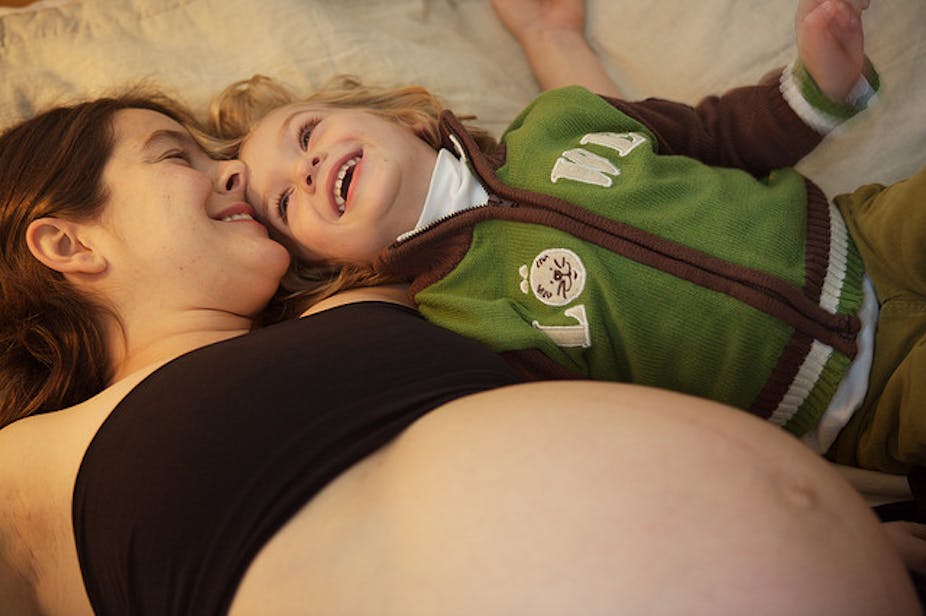Our parents teach us what is to eat. But this process begins well before the fight to get toddlers to eat their veggies. Not only do our parents give us the genes that define our taste receptors, research suggests that what women eat while pregnant and breastfeeding might also affect their child’s taste preferences later life.
Back in the 1980s and 90s, researchers showed that the amniotic fluid (that surrounds the fetus while it grows) can be flavoured by the mother’s diet. In one study, researchers gave pregnant women garlic or sugar capsules. A panel of volunteers then smelt samples of the fluid, and correctly picked out the garlic-eating mothers.
This added to observations made by doctors of unusually smelling amniotic fluid when mothers had eaten spicy food prior to giving birth.
A foetus starts swallowing amniotic fluid at about ten to 12 weeks gestation. They swallow hundreds of millilitres a day. It is thought that sense of taste and smell are well-developed by 21 weeks, well before they will eat or drink on their own.
So, the changing flavours of the amniotic fluid caused by mum’s diet are likely detected by the baby, and may help program the baby’s flavour preferences.
Observational studies support this theory. When babies were offered different salt solutions, for example, the babies whose mums reported having bad morning sickness preferred salty solutions (these foods help settle the stomach). This pattern of salt preference continued into young adulthood.
In rats, pups exposed to alcohol in the womb were more attracted to water laced with alcohol. The same has been shown in many animal models.
Human babies whose mums drank a moderate amount of alcohol during pregnancy responded more positively to the smell of alcohol than unexposed babies. This preference may carry into later life.
Prenatal alcohol exposure is associated with alcohol problems in young adults, even when factors such as genetics, environment and socioeconomic status are taken into account. This suggests that exposure in the womb may change taste perception in later life.
Researchers have tested the maternal diet/offspring taste theory in controlled experiments by giving mothers particular foods, and then testing the reaction the babies have to these foods. In one study 12 pregnant women ate foods containing aniseed, and 12 did not. After birth, babies were given anise-flavoured syrup. Those who were exposed to aniseed before birth responded more positively than those who were not exposed.
The same has been shown with carrots. Mothers were given large amounts of carrot juice, or asked to avoid carrots while pregnant. At six months of age babies were offered cereal made with water or carrot juice. The babies whose mothers drank carrot juice ate more of and responded more positively to the carrot juice cereal.
This transfer of flavours from mum to baby can continue after birth. The carrot juice study also included a group of women who avoided carrots during pregnancy, but drank carrot juice while breastfeeding. Similar research has shown that other flavours such as caraway, vanilla, and mint are transferred in breast milk. Interestingly, researchers also tried banana flavour but did not appear to show up in breast milk.
Why might this happen? From an evolutionary perspective, it makes sense that a child should eat the foods their mother ate. By sharing the flavours, mum is indicating that those foods are safe and available.
Breastfed children seem to be exposed to more flavours through breast milk. An Australian study showed that at two years of age, the longer children were breastfed, the higher variety of foods they had in their diet. Other researchers reported that children who were breastfed were less fussy and more likely to try new foods.
The bottom line? A mum’s diet during pregnancy may influence her baby’s taste. But how this works is not yet clear. It’s also important to note that the human studies in this field are often small cohorts.
How long this influence lasts is also not clear. As we age, additional factors (cultural, social, economic) influence our taste and diet and the further removed you are from the exposure, the harder it is to study.
So a mother’s healthy and varied diet during pregnancy might give her child a head start to healthy eating. There are plenty more opportunities to expose children to positive habits in later life. So if you could only stomach salty crackers during your pregnancy, you have time to catch up.

